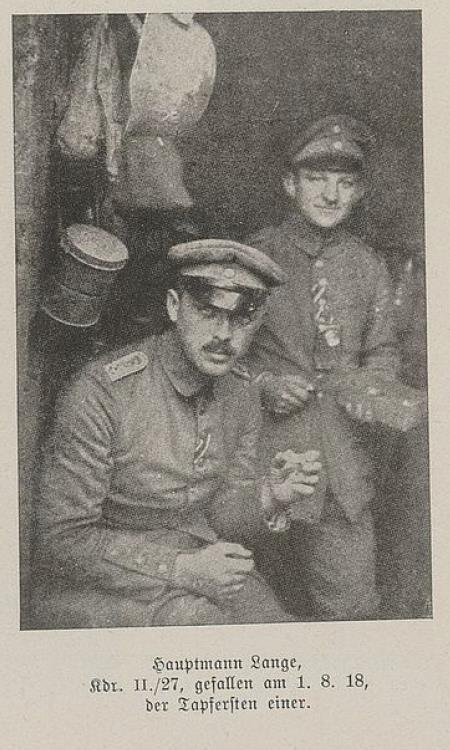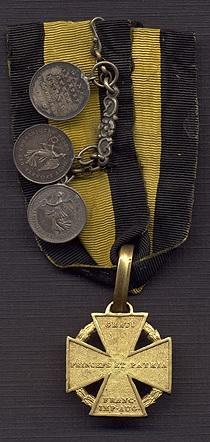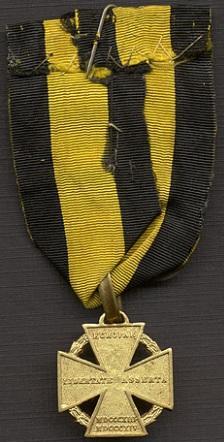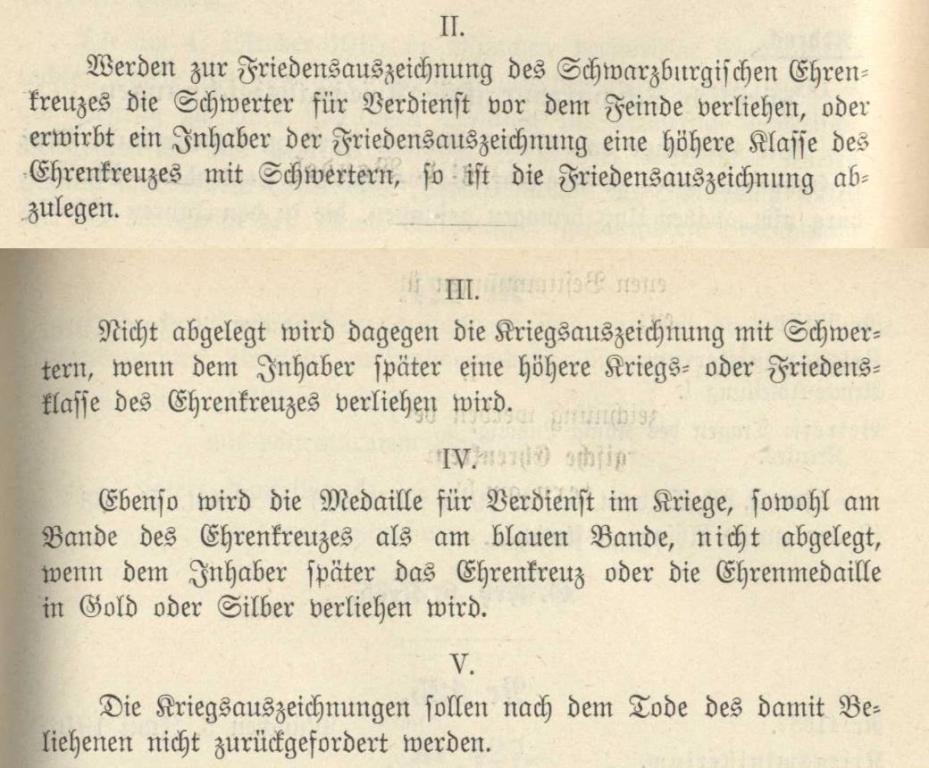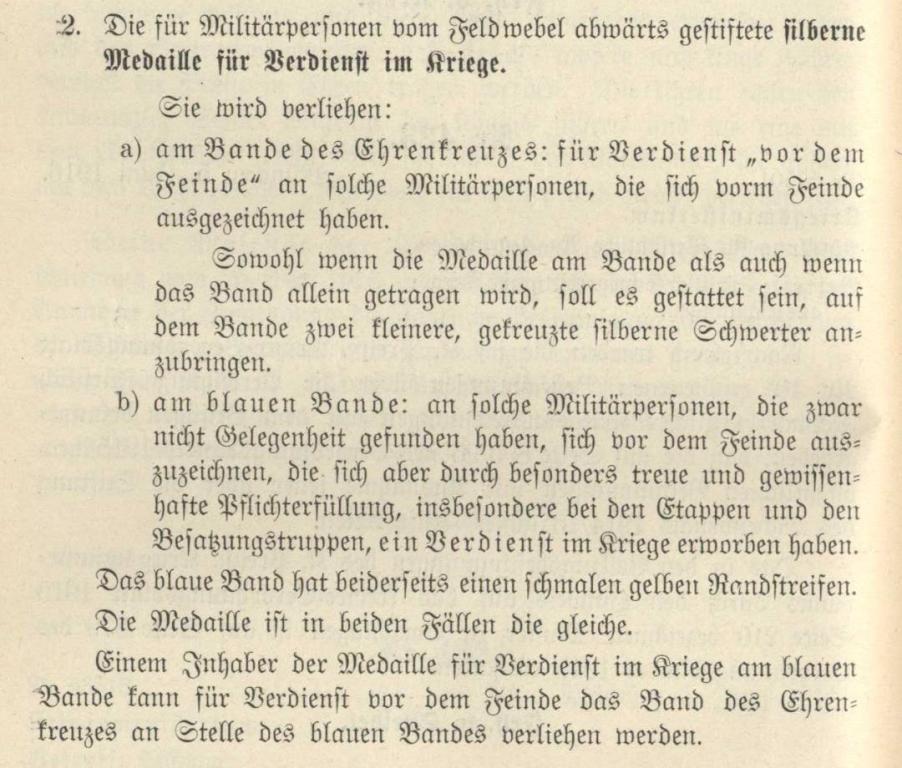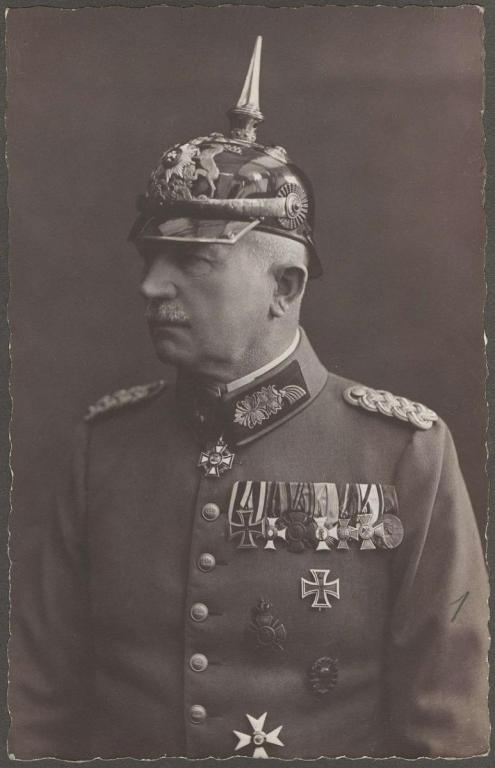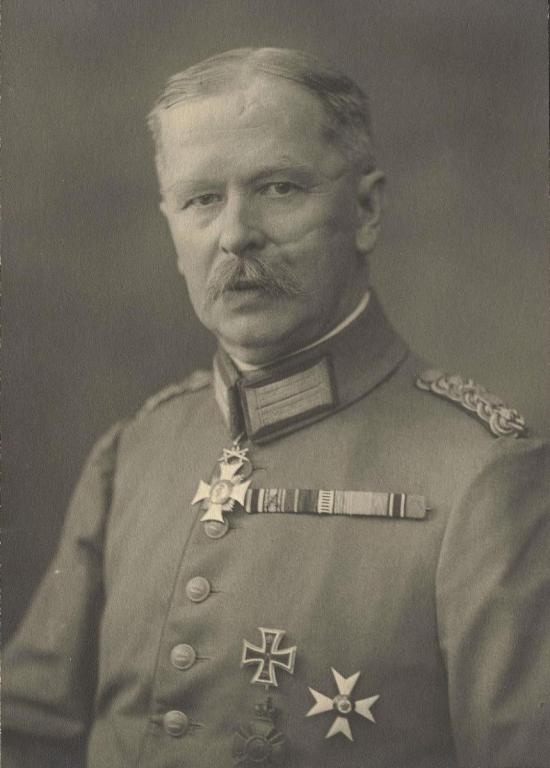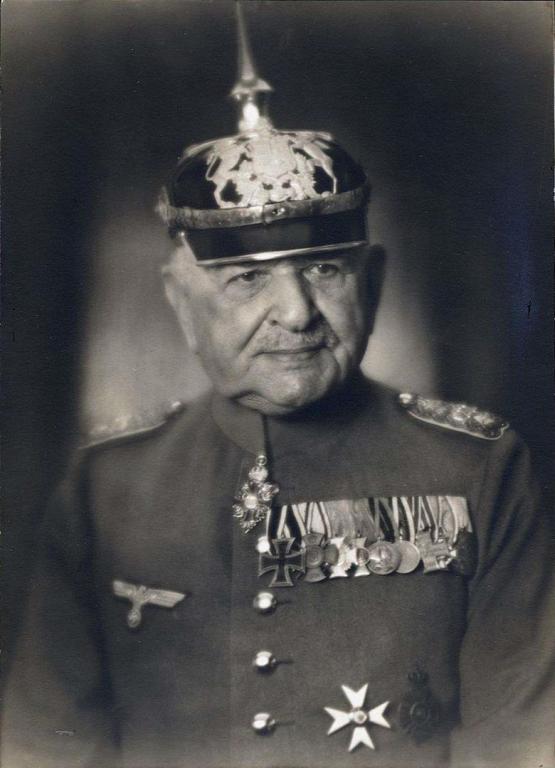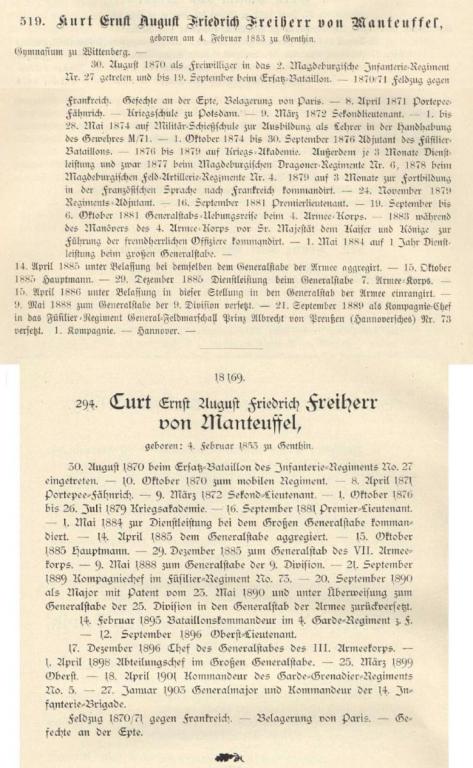-
Posts
4,908 -
Joined
-
Last visited
-
Days Won
97
Content Type
Profiles
Forums
Blogs
Gallery
Events
Store
Everything posted by Dave Danner
-
The Hauptmann a.D. Lange is almost certainly Wilhelm Gotthold Benjamin *31.8.1881 in Danzig, verwundet 31.5.1918 bei Nampcel, †1.6.1918 in Blérancourt 1914-16 Fhr. 11./IR 27, 1916-18 Kdr. II./IR 27 Some supplemental information on some of the officers in webr55's most recent posts: Berghaus, Bruno *4.9.1887 in Königssteele, Hattingen, †14.3.1962 in Bremen; Dipl.-Ing., 1926 Dr.-Ing. (TH Hannover). Leutnant d.R., I. Landwehr-Feldartillerie-Abteilung des X. Armeekorps, Landwehr-Feldartillerie-Regiment Nr. 258. The I. and II. Ldw.Felda.Abtn. X.AK became LFAR 258 in 1916. These units were part of the 2. Marine-Division, so Berghaus appears in two Reichsmarine casualty lists. Wilhelm Mejo is still listed as a Vizefeldwebel in a 26.10.1918 Verlustliste, so his promotion to officer and award of the HOH3X must have been very late in the war. Hubert Klümpen is listed as an Oberleutnant a.D. in the 1934 FußAR 8 membership list and a Hauptmann d.R. in the 1939 edition. He was a Kaufmann (Ledergroßhandlung) in Köln and later Frankfurt am Main. Klems, Heinrich *14.8.1881 in Waltrop, Recklinghausen, †xx.xx.1952 (bestattet in Essen-Rüttenscheid) Rechtsanwalt in Essen Coers, Ernst Friedrich Walter *16.10.1885 in Lünen Bunn, Helmuth Friedrich Wilhelm *3.8.1900 in Charlottenburg †1.12.1965 in Berlin-Wilmersdorf I also cannot find anything about him in any military sources. Ebert, Joseph *17.3.1892 in Hünfeld, Cassel
-
I have seen plenty of cases where someone was a awarded a cross on the "non-combatant" ribbon and later received it on the "combatant" ribbon. This happened sometimes if the cross was originally awarded for service in the Heimat and the recipient later went to the front. It also happened because some states changed their criteria, and awarded the "combatant" ribbon for military service in the Etappe or Heimat, in which case the recipient simply applied for a new ribbon and award document. That's one reason why I don't generally use the terms "combatant" and "non-combatant" for these awards. The Iron Cross 2nd Class was one of those awards which could be given on the black-white for merit in the Heimat. Military personnel assigned to the War Ministry and to Bezirkskommandos and stellv. Generalkommandos, for example, received the black-white ribbon. Thus, for example, a X. Korps Bezirksfeldwebel might have a "combatant" Iron Cross and a Braunschweig Kriegsverdienstkreuz on the yellow-blue ribbon, until Braunschweig changed the criteria and allowed him to wear it on the blue-yellow ribbon. I don't know of any award criteria which allowed one to keep wearing both crosses on the different ribbons. Of course, we have seen plenty of period errors in wear, and after 1918 there weren't any Imperial authorities to tell you not to wear whatever gong you thought you'd earned.
-
Some information on Alfons Solgadi: Solgadi, Alfons Viktor Andreas *10.8.1890 in Drei Ähren, Rappoltsweier Lehrer in Blodelsheim 01.10.1912-30.09.1913 Einjährig-Freiwilliger im Infanterie-Regiment Nr. 113 03.08.1914 beim Infanterie-Regiment Nr. 170 eingezogen 06.08.1914 ins Feld 10.01.1916 Vizefeldwebel 22.08.1916 Leutnant der Reserve 31.12.1916 leicht verwundet 28.05.1918 leicht verwundet 11.10.1918 verwundet 01.11.1918 in amerikanische Gefangenschaft geraten 23.04.1919 aus der Gefangenschaft zurück und entlassen 08.07.1915 Kgl. Preußisches Eisernes Kreuz 2. Klasse 28.09.1916 Kgl. Preußisches Eisernes Kreuz 1. Klasse 24.11.1917 Kgl. Preußischer Hausorden von Hohenzollern, Ritterkreuz mit Schwertern 18.08.1916 Ghzgl. Badische Silberne Verdienstmedaille am Bande der Militär-Karl-Friedrich-Verdienstmedaille 10.11.1917 Ghzgl. Badischer Orden vom Zähringer Löwen, Ritterkreuz 2. Klasse mit Schwertern 01.10.1918 Ghzgl. Badischer Militär-Karl-Friedrich-Verdienstorden, Ritterkreuz 25.06.1918 Verwundetenabzeichen in schwarz xx.xx.19xx Verwundetenabzeichen in mattweiß
-
-
Oberstleutnant Jouanne was an Offizier von der Armee in the 1883 rank list with the uniform of UR 7. He was named to command UR 1 that year, and retired from that command on 16.9.1885 with the Charakter of Oberst and the uniform of UR 1. He died on 2.2.1899. No UR 2 connection that I know of. He received the RA2 around 1883, but that's another neck award.
-
It's actually pretty fortuitous that I went back to look at the statutes. I came across something that I either missed or forgot about, which is that if you received a Kriegsauszeichnung you had to remove a previous peacetime award, but if you received a later, higher class of the Ehrenkreuz, either a Kriegsauszeichnung or a Friedensauszeichnung, you could keep both. This also applied to the medal. Thus, for example, Fritz von Selle and Friedrich-Karl von Witzleben could wear both the SEK1X and the SEK2X, and Franz Ohrtmann could wear both his SEK2E and his SEK3X. There were also three recipients of both the SEK3X and SEK4X, and at least 3 dozen recipients of both the SEK3X and the Silberne Medaille für Verdienst im Kriege (SKM). Also, two recipients of both the SEK4X and the SKM. However, while the statute said you could have both, several of the files I reviewed in Rudolstadt have notations to the effect that an award of the Ehrenkreuz was "an Stelle" the earlier awarded SKM. I am not sure about actual practice. For example, Karl Ogilvie's HPA Personalakte lists both his SEK3X and SKM, but there's no photo with a ribbon bar to see if he actually wore double Ehrenkreuz ribbons. I think there's a GMIC thread with a ribbon bar with double Ehrenkreuz ribbons, but I can't remember if any conclusions were drawn. I suppose a ribbon bar with gilt swords on one and silver swords on the other might indicate a SEK3X/SKM pair. I must admit I am unclear if how ablegen is used here means you could keep both decorations or you could wear both decorations.
-

Seven-Place Medal Bar with Luftschutz Decoration
Dave Danner replied to tyanacek's topic in State, Civil Awards & Decorations
There are two medals for bravery. -
As I've written before in a few places, the most common ways to receive a state award were to be a citizen of the state, to serve in that state's contingent, or to serve in a unit whose Chef or Inhaber was from that state. Saxon citizens normally served in the Saxon Army, so for Saxon awards like the Friedrich-August-Medaille, the first two categories usually overlap. As for the third, Friedrich August III of Saxony was Chef of the 2. Garde-Ulanen-Regiment and Ulanen-Regiment Nr. 16 in the Prussian Army, Inhaber of the 15. Infanterie-Regiment of the Bavarian Army, Chef of Infanterie-Regiment Alt-Württemberg Nr. 121 of the Württemberg Army, and à la suite the 1. See-Bataillon. That said, for an enlisted award like the Friedrich-August-Medaille, these awards to non-state citizens/units were less common than was the case for officers. For example, a good 1/3 or more of the officers of the Bavarian 15. Infanterie-Regiment received the Albrechts-Orden. I just went through part of one of the Kriegsstammrollen for the enlisted men, and only about a dozen of the first 150 names had a Friedrich-August-Medaille in either silver or bronze.
-
He was erroneously listed as Köpke by the Militär-Kabinett. HOH3X on 12.4.1917 as a Lt.d.R. in IR 375. Köbke, Hans Heinrich Christian, *23.3.1892 in Bordesholm, gefallen 10.8.1917 an der Susita bei Bisighesti in Rumänien. Kaufmann in Hamburg; Commissioned on 22.5.15 as a Lt.d.R. (II Hamburg) with a Patent of 22.3.15 in Ersatz-Infanterie-Regiment Keller of the Detachement von Westernhagen. Regiment Keller became IR 375.
-
One more full name and details: Molle, Friedrich Erich, *20.8.1868 in Münsterberg. Hauptmann a.D., zuletzt im Pioner-Bataillon Nr. 21, früher Adjutant der 2. Pionier-Inspektion (22.3.1910 Abschied bewilligt), am 22.3.1915 Charakter als Major a.D., z.Zt. Bataillons-Führer im RIR 39, 27.1.1916 Patent seines Dienstgrades erhalten, 1918 leicht verwundet. Known decorations: RAO4 (19.8.09), HOH3X (20.5.17, Maj.a.D., IR 190), Cent (22.3.97)
-
Erich Adolf Haniel, *9.9.1878 in Münster. Erich Haniel and Martel née Junghann were divorced in October 1919. He was remarried in December 1921 to Ada Frida Felicitas née Wagner. He was promoted to Dr.phil. on 22.7.1922 by the University of Heidelberg (one of my alma maters), and was a Kaufmann in Nürnberg (through at least the 1942 Adreßbuch).
-

Imperial 1914-1918 Guendell, Erich von
Dave Danner replied to Dave Danner's topic in Germany: All Eras: Signature Database
16.6.1913 is correct. Gazetted in the Militär-Wochenblatt on the same day. 4.9.1913 was the date he was placed zur Disposition. I had 21.12.1924 as that is the date given in the Ehrenrangliste. However, the burial register of the Garnisongemeinde Hannover says he died on 20.12.1924 at 11:15 AM and was buried on 24.12.1924.


